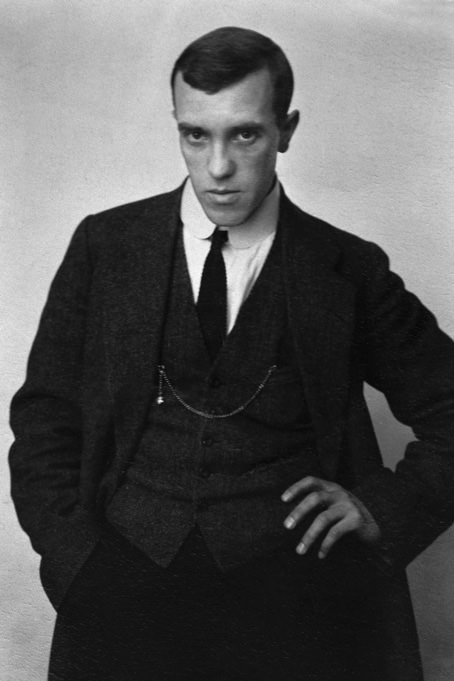

The reproduction of these works without the express written consent of the owner of the works is prohibited.
DownloadLandscape with Houses
This paining is one of the few in Konrad Mägi’s oeuvre that has a “concretized” treatment of light: we have some idea of where its source is and the light has a definite direction as indicated by shadows and the reddish glow on the walls of the houses. The light is realistic and melds into the whole organically and it does not take on dramatic additional meanings; still, much attention has been devoted to it.
We generally do not see such a realistic approach to light in Mägi’s paintings. The works are at times more light-filled and sometimes paler, but the light source is almost never seen, the landscape and objects are not surrounded by shadows, and the light appears omnidirectional. In Mägi’s paintings, light is usually distributed evenly across the entire surface, it does not make certain parts of the painting stand out in relief or conceal them in shadow. This effect, lacking in the transitions between light and shadow seen in real life, makes his paintings seem more unrealistic. Yet it is perhaps somewhat surprising that Mägi, who plumbed art for emotional affect, dramatizes his works with colours and composition but only rarely uses light to accomplish this.
Landscape with Houses on the other hand is a work where light becomes key in conveying mood and building atmosphere. The shadows delicately fall on to snow and the walls are luminous, but Mägi has not theatrically exaggerated the glow; his brush patterns are rich in nuance and instead of an affective viewing experience, he focuses on sensitively bringing out the reflections of light, which could have a calming and pleasing, not unsettling, influence on viewers.
The birch with a curiously twisted trunk on the right side of the painting is a motif that pervades many of his Norwegian paintings (see Norwegian Motif with Birches, ca 1908, Art Museum of Estonia). Interestingly enough, the motif of the twisted trunk comes back in Mägi’s work in Italy, where in many pictures we see not a lush and bushy tree but a decoratively twisted trunk, which compared to the life force all around is oddly bare (see e.g. Capri Night, 1922–1923, Enn Kunila art collection).
The reproduction of these works without the express written consent of the owner of the works is prohibited.

